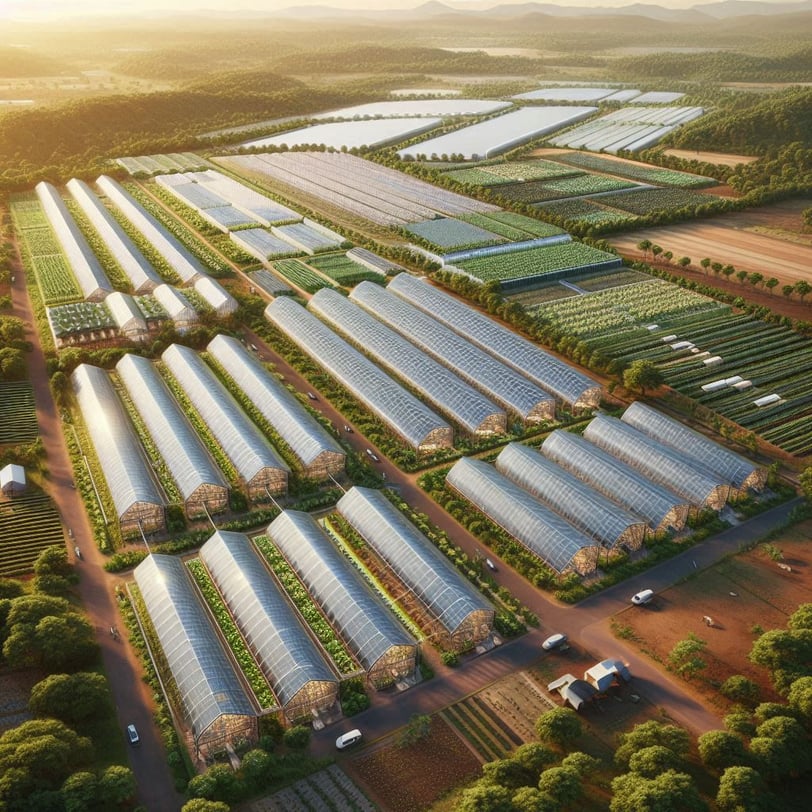Solar Power: A Revolutionary Solution for Global Food Stability
5/14/20243 min read


The Potential of Solar Power for Food Stability
Solar power has the potential to revolutionize food production and bring about stability across the world. The adoption of solar technology in agriculture can address various challenges such as climate change, energy costs, and food security. By harnessing the power of the sun, countries can mitigate the impact of climate change on agricultural productivity, reduce reliance on non-renewable energy sources, and ensure a sustainable food supply for future generations.
Benefits of Solar Power in Agriculture
One of the key benefits of utilizing solar power in agriculture is its ability to provide a consistent and reliable source of energy. Solar panels can be installed on farms to generate electricity for irrigation systems, lighting, and other agricultural operations. This reduces the dependency on traditional energy sources, which are often subject to price fluctuations and supply chain disruptions.
Moreover, solar power offers a clean and renewable energy solution, contributing to a reduction in greenhouse gas emissions. As the agricultural sector is a significant contributor to global emissions, the adoption of solar technology can help mitigate environmental impact and combat climate change.
Furthermore, solar-powered irrigation systems can enhance water efficiency in farming, particularly in regions prone to drought and water scarcity. By utilizing solar energy to pump and distribute water, farmers can optimize their water usage and maintain crop productivity even in arid conditions.
In addition to environmental and operational benefits, the integration of solar power in agriculture can lead to cost savings for farmers. Once the initial investment in solar infrastructure is made, the operational costs are significantly lower compared to traditional energy sources. This can result in improved profitability for farmers and contribute to economic stability within the agricultural sector.
The Case for Solar Adoption in North America
While the potential of solar power in agriculture is evident on a global scale, the adoption of this technology is particularly crucial for North America. The region faces its own set of challenges related to food production, energy consumption, and environmental sustainability.
Firstly, North America has a diverse agricultural landscape, encompassing a wide range of climates and crop types. The implementation of solar technology can help mitigate the impact of extreme weather events, temperature fluctuations, and water scarcity on crop yields. This is especially relevant in the context of climate change, which poses significant risks to food security in the region.
Furthermore, the adoption of solar power aligns with the growing emphasis on sustainability and environmental responsibility in North America. As the demand for organic and ethically sourced produce continues to rise, consumers are increasingly conscious of the environmental footprint of their food. By integrating solar energy into agricultural practices, farmers can meet these consumer demands and contribute to a more sustainable food system.
From an economic standpoint, the adoption of solar power in North American agriculture presents an opportunity to reduce operational costs and enhance long-term resilience. As energy prices continue to fluctuate, investing in solar infrastructure can provide a stable and predictable energy source for farmers, ultimately improving the economic viability of agricultural operations.
Moreover, the integration of solar power aligns with the broader renewable energy initiatives in North America. As governments and businesses prioritize clean energy transitions, the agricultural sector can play a significant role in contributing to renewable energy targets and reducing overall carbon emissions.
Conclusion
In conclusion, the adoption of solar power in agriculture holds immense potential for enhancing food stability across the world. By leveraging the benefits of solar technology, countries can address key challenges in food production, energy sustainability, and environmental impact. In the context of North America, the integration of solar power presents an opportunity to bolster agricultural resilience, meet consumer demands for sustainable produce, and contribute to broader renewable energy objectives. As the global community continues to prioritize sustainable development and climate action, the adoption of solar power in agriculture is not only beneficial but imperative for ensuring a secure and stable food supply for future generations.
